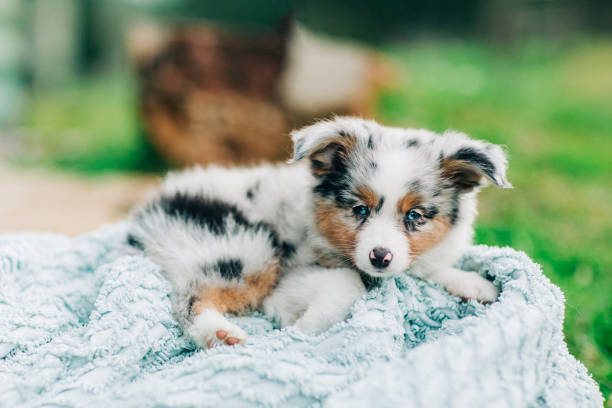American Shepherd

Breed History:
The Miniature American Shepherd originated in the United States during the late 1960s. Bred from smaller Australian Shepherds, the goal was to create a compact, agile herding dog suitable for smaller farms and more manageable for active households. Though smaller in size, the Miniature American Shepherd retained all the working traits of its larger relative, including intelligence, loyalty, and strong herding instincts.
Initially called the Miniature Australian Shepherd, the breed gained popularity for its versatility in dog sports and suitability as a family companion. It was officially recognised by the American Kennel Club (AKC) in 2015 as the Miniature American Shepherd, reflecting its distinct development in the U.S.
|
Gender |
Height |
Weight |
|
Male |
36–46 cm |
11–18 kg |
|
Female |
33–43 cm |
9–16 kg |
Size – Small-Medium
Life Expectancy: 12–15 years

Breed Appearance:
The Miniature American Shepherd is a well-balanced, athletic, and compact dog. It has a double coat that is medium in length and can be straight or wavy. Common colors include black, blue merle, red, and red merle, often with white markings and tan points.
The breed has expressive, almond-shaped eyes which can be blue, brown, amber, or heterochromatic (two different colors). Ears are triangular and set high, and the tail is either naturally bobbed or docked. Its body is slightly longer than tall, giving it a solid yet agile appearance.
Breed Type – Herding/Family:
Bred originally as a herding dog, the Miniature American Shepherd excels in roles requiring intelligence, endurance, and agility. It is loyal, highly trainable, and thrives in a family environment, especially when given regular tasks or activities.
This breed is alert and protective, making it a good watchdog, though it is not aggressive. It forms strong bonds with its family and is especially good with children and other pets when properly socialized. Its adaptable and friendly nature makes it a good fit for both rural and suburban living.

Training:
Miniature American Shepherds are highly intelligent and eager to please, which makes them easy to train with the right approach. They excel in obedience, agility, herding trials, and even therapy work. Their quick learning ability and responsiveness make them suitable for both experienced and first-time dog owners.
Positive reinforcement methods are best, including treats, praise, and play. Early socialization is important to prevent shyness or wariness around strangers and unfamiliar environments.
Health & Care:
This is a generally healthy breed, but some genetic conditions may occur, including:
-
Hip dysplasia
-
Collie eye anomaly (CEA)
-
Progressive retinal atrophy (PRA)
-
MDR1 sensitivity (drug sensitivity common in herding breeds)
Routine health screenings, regular vet visits, and responsible breeding practices help minimize health risks. Their coat requires moderate grooming, and a healthy diet along with daily activity contributes to long-term wellness.

Living Conditions:
The Miniature American Shepherd is a versatile breed that adapts well to different living conditions. It can thrive in an apartment if given sufficient exercise and mental stimulation, though it naturally prefers a yard to run and play. It does best in an active household where it has a purpose or outlet for its energy.
The breed is not suited for sedentary lifestyles. Without adequate stimulation, it may develop behavioral issues such as excessive barking, restlessness, or destructiveness.
Exercise:
Daily exercise is essential to keep this energetic breed happy and healthy. Activities like brisk walks, off-leash runs in secure areas, herding, agility courses, and obedience training are all beneficial.
Mental stimulation is just as important as physical activity. Puzzle toys, scent games, and learning new commands or tricks will help satisfy the dog’s sharp mind and reduce the risk of boredom.
Grooming:
The Miniature American Shepherd has a weather-resistant double coat that sheds seasonally. Weekly brushing is sufficient most of the year, but during shedding seasons (spring and fall), more frequent brushing helps manage loose fur and prevent mats.
Bathing should be done as needed. Regular nail trimming, ear cleaning, and dental care should be part of the grooming routine to prevent infections and maintain good health.

Advantages:
-
Highly intelligent and trainable
-
Loyal and affectionate with family
-
Versatile—excels in dog sports, obedience, and therapy work
-
Adapts well to various environments with proper exercise
-
Generally good with children and other pets
-
Moderate grooming needs compared to long-coated breeds
Disadvantages:
-
High energy level—needs daily mental and physical activity
-
May become bored and destructive without stimulation
-
Sheds seasonally and requires consistent brushing
-
Prone to certain genetic conditions—health testing is essential
-
Can be shy or reserved without early socialization
-
Needs strong leadership and consistent training

